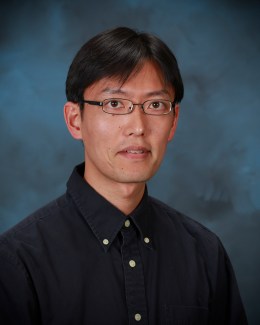OAK RIDGE, Tenn., Oct. 30, 2019—Researchers at the Department of Energy’s Oak Ridge National Laboratory have received five 2019 R&D 100 Awards, increasing the lab’s total to 221 since the award’s inception in 1963.
Known as the “Oscars of Invention,” the awards recognize the top 100 revolutionary technologies of the year, as well as the scientists and engineers who created them. Winners will be honored at the 57th annual R&D 100 Conference on Dec. 5.
ORNL researchers received awards for the following innovations:
CellSight—Rapid, Native Single Cell Mass Spectrometry, developed by ORNL and Cytena GmbH.
Knowing the broad chemical makeup of a single cell can advance disease diagnosis and develop more effective therapeutics. In medicine, pharmaceuticals and environmental monitoring, there is a need to detect, target and chemically characterize cellular subpopulations in their native environment.
To meet this need, ORNL researchers have developed CellSight, which enables rapid mass spectrometry of individual cells. The product ejects tiny droplets of liquid solution containing single cells through a mechanism similar to an inkjet printer head. The cell is imaged, isolated and then transferred to the mass spectrometry system, where CellSight’s unique software delivers quick analysis.
This allows researchers to get information on thousands of lipids and metabolites with single cell resolution without requiring molecular labeling or extensive sample preparation procedures.
Funding for the project came from the DOE Laboratory Directed Research and Development program.
The ORNL team was led by John Cahill and included Vilmos Kertesz.
High Strength Binder System for Additive Manufacturing, developed by ORNL and ExOne.
Binder jetting is an additive manufacturing technology that works by layering powdered materials and cohering them into desired shapes using a liquid binding material deposited via inkjet. Though these liquid binders are vital ingredients in the binder jetting process, few improvements have been made on binder technology in recent decades.
ORNL researchers have developed a novel liquid binder that is stronger, more functional and more environmentally friendly than the most widely used liquid binder, furan. The binder can be deposited in large quantities while also maintaining sharp features in an object’s design, meaning the strength can be finely tuned to its applications. Uniquely, parts printed with the binder can be stronger than cement.
These parts are often custom casts or molds used for traditional manufacturing techniques. Because the binder is water soluble, these molds can be removed simply by washing them away, which could enable the creation of more complex parts than what is currently achievable.
Funding for this project came from the DOE Energy Efficiency and Renewable Energy Advanced Manufacturing Office and ExOne.
Tomonori Saito and Amy Elliott led the ORNL portion of the development team, which included ORNL’s Lu Han, as well as Dustin Gilmer and Michelle Lehmann of the University of Tennessee’s Bredesen Center for Interdisciplinary Research and Graduate Education.
Multiparameter Sensor Platform for Cyber-Physical Security of the Electric Grid, developed by ORNL and Brixon.
ORNL researchers have developed multiparameter sensor platforms that can communicate with utility operators and provide real-time surveillance of the electric grid. These devices, called “Grid Agents,” can help improve situational awareness and protect the grid from cyber-physical attacks.
The sensors have an important dual function. They can monitor several physical parameters related to the operation of the grid, including temperature, solar irradiance and chemical gases like methane and hydrogen. Simultaneously, they relay network communications back to a utility’s IT security system, helping utilities optimize grid function and ensure security.
Grid Agents can be installed or attached to a drone and operated remotely. This innovation can enable grid monitoring after man made and natural disasters, when systems are vulnerable to attack or interference.
Funding for this project came from the DOE Grid Modernization Laboratory Consortium.
The ORNL team was led by Peter Fuhr and included Marissa E. Morales-Rodriguez, Gary Hahn, Kenneth Woodworth and Sterling Rooke.
Voltanol: Electrochemical Conversion of Carbon Dioxide to Ethanol, developed by a team of ORNL researchers.
A team of ORNL researchers have developed a carbon nanospike catalyst—a nanotechnology-based electrocatalyst composed of carbon, nitrogen and copper—that can convert carbon dioxide and water to ethanol. The catalyst is made of a highly textured form of graphene—a type of single-layer carbon—that is arranged into atomically sharp spikes. The spikes are embedded with copper nanoparticles; together they form a sequential catalyst that synthesizes ethanol.
Ethanol is an affordable, high-energy-density liquid fuel that could be a viable alternative to gasoline for internal combustion engines. Converting water and waste CO2 to ethanol also removes the harmful greenhouse gas from the air. Using renewable electricity to power the reaction makes the process carbon neutral.
Funding for the project came from the DOE Office of Science and the Technology Commercialization Fund and the DOE Office of Fossil Energy.
ORNL’s Adam Rondinone and Yang Song, formerly of ORNL, led the development team, which included ORNL’s Dale Hensley and Peter Bonnesen.
ORNL worked as a partner on the following winner:
Unified Communications X (UCX), submitted by Los Alamos National Laboratory and codeveloped by Arm Ltd., Mellanox Technologies, ORNL, Advanced Micro Devices, Argonne National Laboratory, NVIDIA, Stony Brook University and Rice University.
As supercomputers worldwide move towards exascale—the ability to make a quintillion calculations per second—they increasingly incorporate diverse hardware and processing systems. For all of the elements in these systems to operate harmoniously, they must communicate.
UCX is an open source software for high performance computers that allows these hardware systems and architectures to communicate by creating common interface definitions. By defining a common set of features between hardware and programming models, UCX allows developers to bind together libraries, network architectures and custom software and hardware interfaces into one package, essentially channeling the diversity of the world’s HPC applications into one user-friendly research tool.
Released in 2018, UCX is already deployed on supercomputers around the world, including ORNL’s Summit and Sandia National Laboratory’s Astra.
Funding for the project came from the Department of Defense.
The ORNL portion of the development team was initially led by Oscar Hernandez with significant technical contributions from Matthew Baker and Aaron Welch.
UT-Battelle LLC manages Oak Ridge National Laboratory for DOE’s Office of Science, the single largest supporter of basic research in the physical sciences in the United States. DOE’s Office of Science is working to address some of the most pressing challenges of our time. For more information, visit https://energy.gov/science







